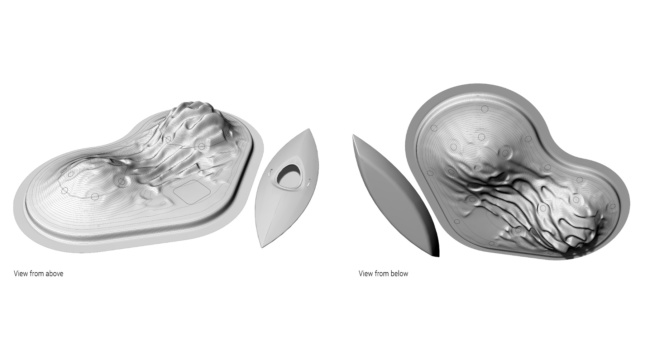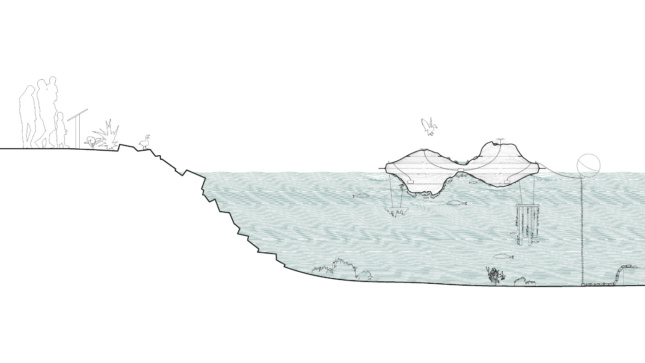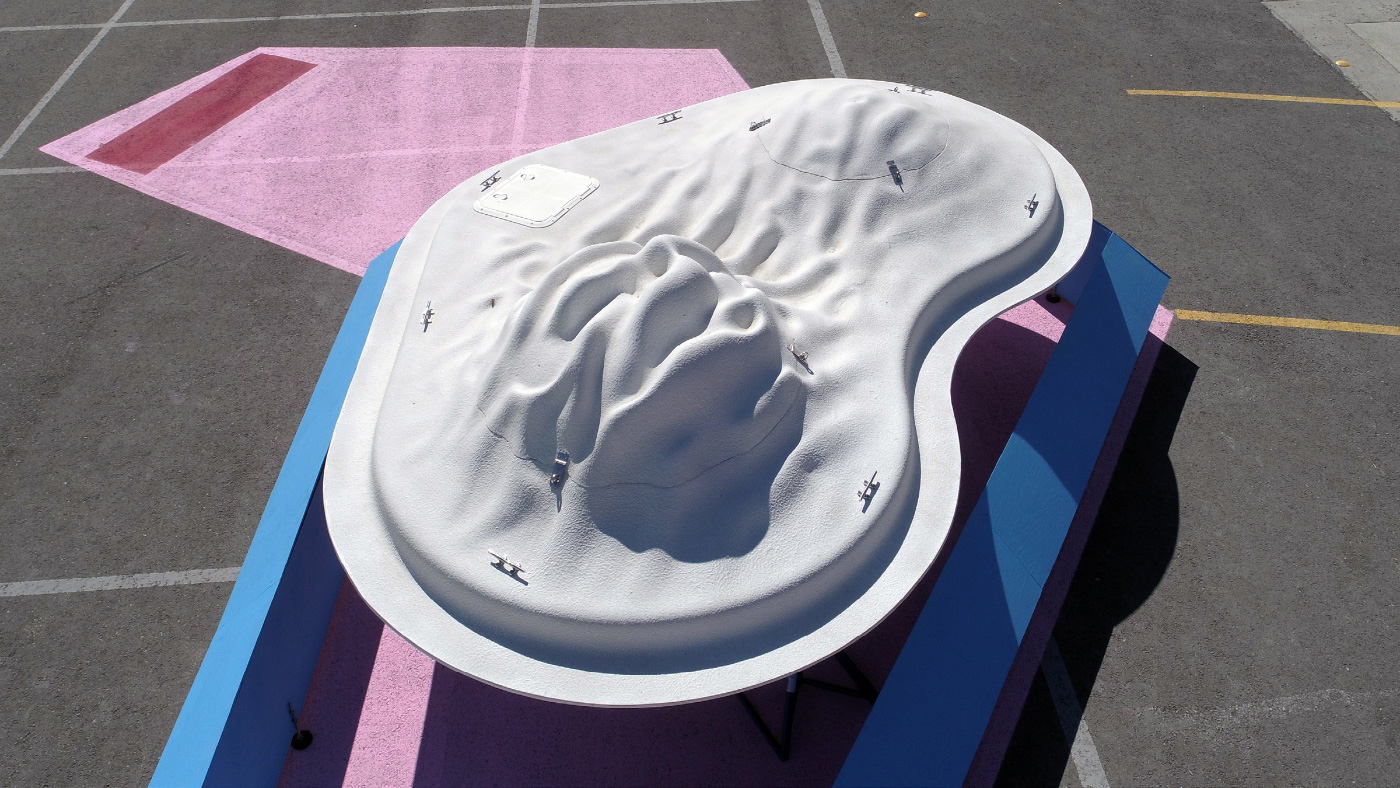For many, the future floats. Seasteaders, BIG’s floating city, the “Danish silicon valley” (at sea, naturally): in a time of rising tides, many are suggesting working with, or on, the ocean rather than against it. Add the Buoyant Ecologies Float Lab to the list. The 13-foot-by-8-foot object was designed by architects and designers Adam Marcus, Margaret Ikeda, and Evan Jones as a prototypical “island” that demonstrates not just an understanding of marine ecology, but also digital design and fabrication techniques. And, not just a Band-Aid approach, it actively protects coastal communities from the brunt of rising seas by dispersing the energy of oncoming waves.

The Buoyant Ecologies Float Lab is the result of a collaboration between California College of the Art’s architecture school and students in the Architectural Ecologies Lab (AEL), along with scientists at Moss Landing Marine Laboratories Benthic Lab. Fabrication support was supplied by Kreysler & Associates. The AEL was founded in 2018, as Ikeda told Hyperallergic, “a research lab that could link speculative architectural thinking with real-world prototyping and scientific expertise,” and go beyond academic borders. Intended as a “new kind of resilient coastal infrastructure,” the Buoyant Ecologies Float Lab is the result of multiple years of research into new composites and new forms for ecologically-sound architectures.
One of the Buoyant Ecologies Float Lab’s key innovations is its fiber-reinforced polymer composite substrate. The “ecologically optimized” material can be digitally formed into varied contours—“underwater topographies”—that encourage the settlement of invertebrate animals that “contribute to the biological diversity of the marine ecology.” Using peaks and valleys on both sides of the structure—produced in two identical halves to minimize the waste of producing custom molds—of varying sizes, the Lab features “fish apartments” supplied by nutrients from plankton and other invertebrates that are carried along by flowing water. Not only does this process and living space for marine animals increase biodiversity, but the biological growth it facilitates also has the added effect of “attenuat[ing] wave action and reduc[ing] coastal erosion.” Thinking ahead, the Lab has scouted out additional locations to attach more prototypes, including future versions of structures made from the same unique composite, designed to further enhance wave attenuation, or reduce the intensity of waves acting on it.

The Buoyant Ecologies Float Lab will be deployed in San Francisco Bay this year.
